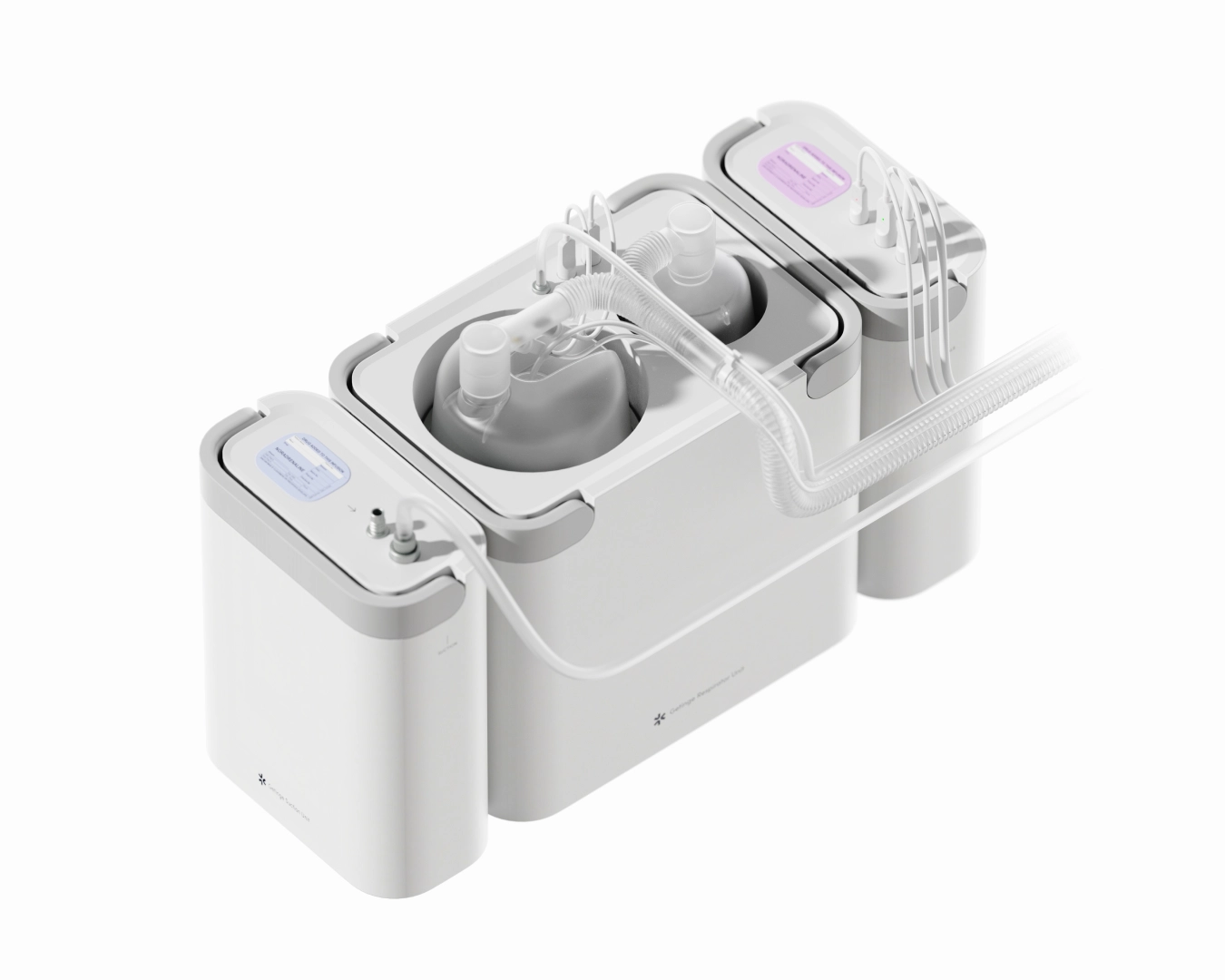GETINGE AORA
Future Vision of the NICU
Year
Duration
Collaboration
Team project
2024 Umeå institute of design
10 weeks
Getinge
Joel Sjödin/Yash Saboo/Niklas Andreasen
GETINGE AORA
Future Vision of the NICU
Year
Duration
Collaboration
Team project
2024
Umeå institute of design
10 weeks
Getinge
Joel Sjödin/Yash Saboo/Niklas Andreasen
The opportunity
Current systems are not supporting neonatal intensive care of preterm infants and thus lead to early and lasting separation of babies and parents.
Despite the benefits, healthcare professionals struggle with current systems and workflows to facilitate close contact.
The approach
An interdisciplinary journey driven by user-centered design, research, collaboration, and hands-on development.
In this student project, we partnered with MedTech leader Getinge to gain key insights into ICU settings, neonatal equipment, and the care of fragile newborns. Simultaneously, we collaborated with the NICU ward at NUS Hospital in Umeå, Sweden, working closely with experienced nurses to understand workflows, challenges, and design opportunities across the full neonatal care journey—from air transport to discharge.
The solution
AORA. Fosters zero-separation care, enhancing the well-being of premature babies and their parents while reducing inequality by ensuring equal access to their newborns.
This hub offers an environment for the entire care journey by merging all essential devices into a modular incubator system. It reduces footprint, minimizes clutter, organizes tubes and cables, and streamlines infant handover for skin-to-skin contact.

A hub developed to offer a single environment enabling parental presence throughout the entire neonatal intensive care journey, no matter what complications arise.
Project focus family-centered care and zero separation ↓

Painpoints preventing skin-to-skin ↓

3 Pillars hollistic approach ↓

1:1 Scale roleplaying and prototyping ↓
Building a true-to-scale mockup helped us to test and validate our ideas; it served a crucial role in shaping the ideas that ended up in the final concept.


Hands-free deactivation of alarms ↓
Working ergonomics and easy access during a procedure ↓
Transfer from incubator to a skin-to-skin session ↓
Changing disposables ↓
The pneumatic arm supports flexible patient movement and easier skin-to-skin contact. ↓





Increased skin-to-skin is vital for infant recovery and parental bonding.
Interior designed with the smallest and most fragile patients in mind ↓
AORA is designed to fully support patients, staff, and relatives. Its generous and visible interior offers plenty of space for every care task. The merino wool lining is tailored to the needs of premature babies, whose hypersensitive skin is up to 60 % thinner than normal skin.

Versatile Use Cases Stationary & Mobile Application ↓
Connected to facility’s infrastructure or running independently for hours with its own resources. Meant to bridge the gap between all stationary and mobile solutions along the care journey,


Self-sufficient System Fully Equipped & Cohesively Routed. ↓
Neatly organized by streamlining all lines, cables, and tubes in just one direction toward a single exit point.

Modularization Merged Components & Flexible Allocation ↓


↑Merging respiratory support: CPAP, ventilator, humidifier and resuscitation.
Merging and thus reducing the overall size by specifically adapting the volumes to preterm infants’ breathing capacities.
↑Disposable syringe containers
Pre-filled and disposable, two-trigger springloaded, syringe containers ease the refilling process. Single rotary systems enable anti-gravity flow. Early connection of lines (if medication allows) result in less lines on the patient (for UVC or IV - PICC)..

↑Connecting sensors along one cable to reduce the amount of lines and clutter also inside the incubator.
Connecting ECG, temperature and SpO2 sensors in one line to reduce cables and the number of irritating patches on the infant’s sensitive skin.

The pneumatic arm enables secured lines from the modules to the incubator ↑


↑Easy organisation
Rubber dividers keep lines in place. Joints become gates to route tubes without leaving the system. Open both arm doors to install new lines.
Cable management accessible routing ↑
Once inside the incubator, the tubes are securely fixed and can only be removed from the closed system by opening the glass dome.
The incubator is securely attached thanks to a bayonet locking mechanism.
The incubator is permanently connected to the base either via the bayonet lock on the arm handle or the base contact surface.




↑ Safety triggers unlock the pneumatic arm and wheel brakes.
Unlock intentional and weightless arm manipulation with the intuitive press-to-release triggers on both front and rear handles.


↑ More Reassurance Transport Monitoring & Developmental Care
The transport monitor ensures clear patient readings, while a periodically mounted camera provides a holistic image for developmental care, pattern reports, and distant parental bonding.
PROCESS
Close collaboration with the NICU ward in Umeå. ↓

Snippets from the product development process ↓









